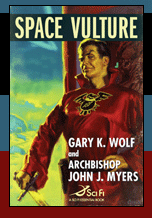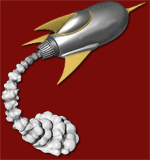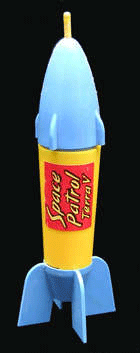The Mathematics of
Science Fiction
 I like to think of Science Fiction in mathematical terms. I like to think of Science Fiction in mathematical terms.
Mathematicians begin with postulates, the starting assumptions from which mathematics derives. They formulate theorems containing hypotheses and conclusions. Mathematicians prove their theorems using logical arguments demonstrating that if the hypotheses are true then the conclusions based on them must also be true.
Science Fiction writers approach storytelling the same way. They change an accepted postulate – about a society, or an age, or a human trait, or even a physical law - and then work through the consequences of this new set of assumptions.
In one of my favorites, the Dune series, for instance, Frank Herbert postulated a world with almost no water. He then worked through what that meant for the human beings and alien creatures living there.
The trick, which the great science fiction writers have discovered, is to take this essentially sterile scientific approach to story telling and blend it with a sense of humanity that takes the emphasis off science and puts it firmly onto fiction.
-- Archbishop John J. Myers
How Roger Rabbit Was Born
 It’s very interesting to me to hear John compare Science Fiction to mathematics. I’m especially intrigued by his notion of changing a single postulate and examining what that does to the world around us. Because that’s exactly how Roger Rabbit came to be. It’s very interesting to me to hear John compare Science Fiction to mathematics. I’m especially intrigued by his notion of changing a single postulate and examining what that does to the world around us. Because that’s exactly how Roger Rabbit came to be.
One Saturday morning I was watching cartoons on TV. (Purely for research, I told my wife Bonnie. A way to connect with popular culture. I derive no pleasure from it whatsoever. Yeah, right!!!) When suddenly I became aware of not the programs but rather the commercials within them.
I saw Tony the Tiger, the Trix Rabbit, Cap’n Crunch, and Snap, Crackle and Pop. These were cartoon characters interacting with real kids, and nobody seemed to think that was odd.
What a wonderful premise for a book, I thought. A world where cartoon characters are real.
I spent the next five years figuring out what kind of world that would be. It was the hardest work I’ve ever done. In order for the premise to succeed, in order for readers to believe it and accept it, everything that happened in my cartoon world had to be logically consistent with the central premise.
Here’s an example. Do Toons drink liquor? If so, what kind? Human liquor, or Toonshine? If they’re not supposed to drink human liquor, and they do, what happens to them? Are there Toon bars as well as human bars? If so, what happens when a Toon goes into a human bar? How about vice versa?
You get the idea. That seemingly simple premise gave rise to a raft of conceptual problems.
Lucky for me I was eventually able to work them through and create Toontown. Where two plus two really does equal five and three quarters.
--Gary K. Wolf
|




 I like to think of Science Fiction in mathematical terms.
I like to think of Science Fiction in mathematical terms. It’s very interesting to me to hear John compare Science Fiction to mathematics. I’m especially intrigued by his notion of changing a single postulate and examining what that does to the world around us. Because that’s exactly how Roger Rabbit came to be.
It’s very interesting to me to hear John compare Science Fiction to mathematics. I’m especially intrigued by his notion of changing a single postulate and examining what that does to the world around us. Because that’s exactly how Roger Rabbit came to be.